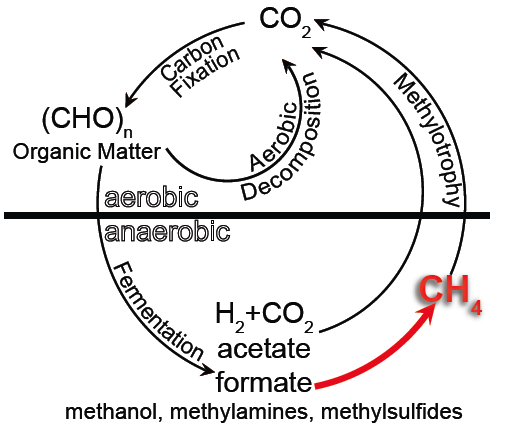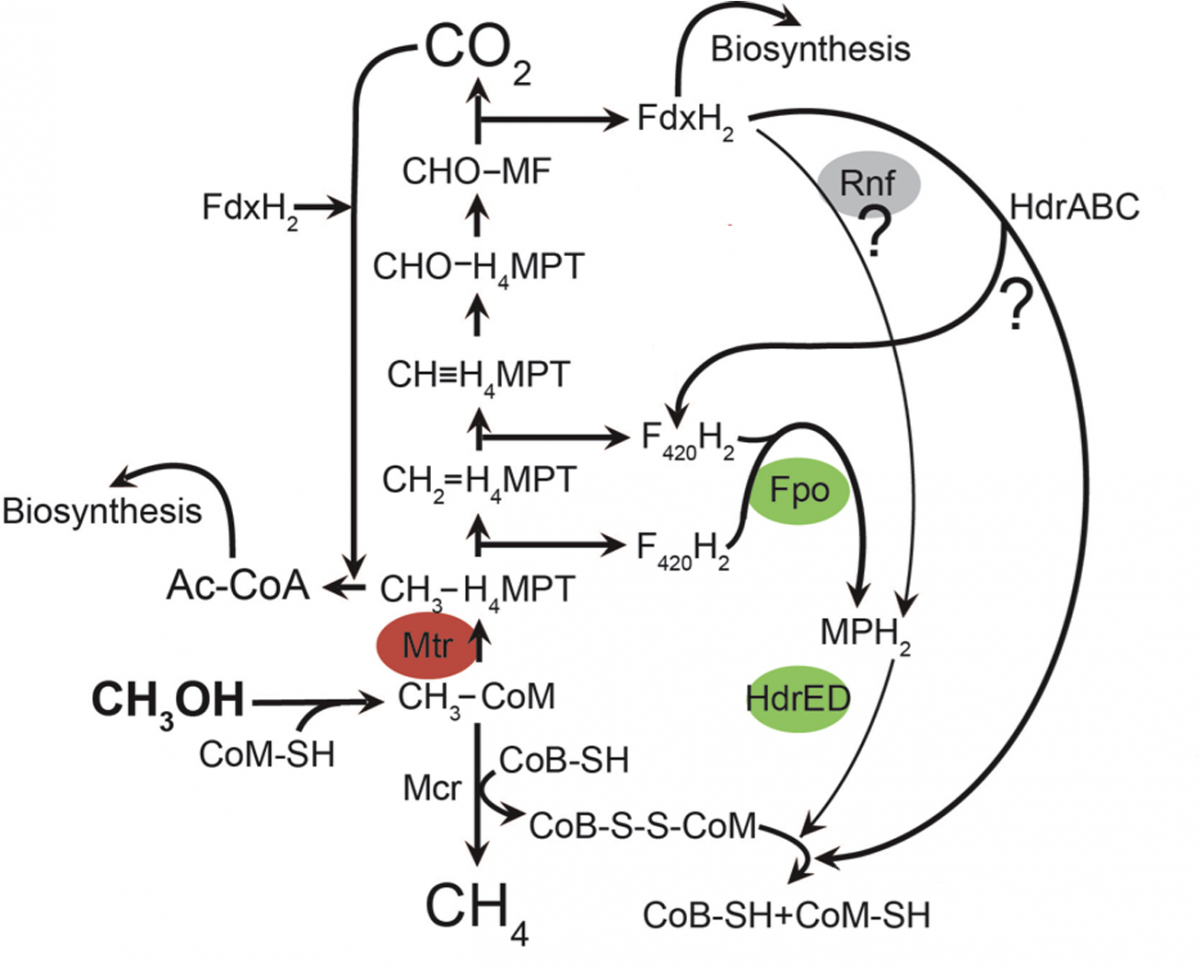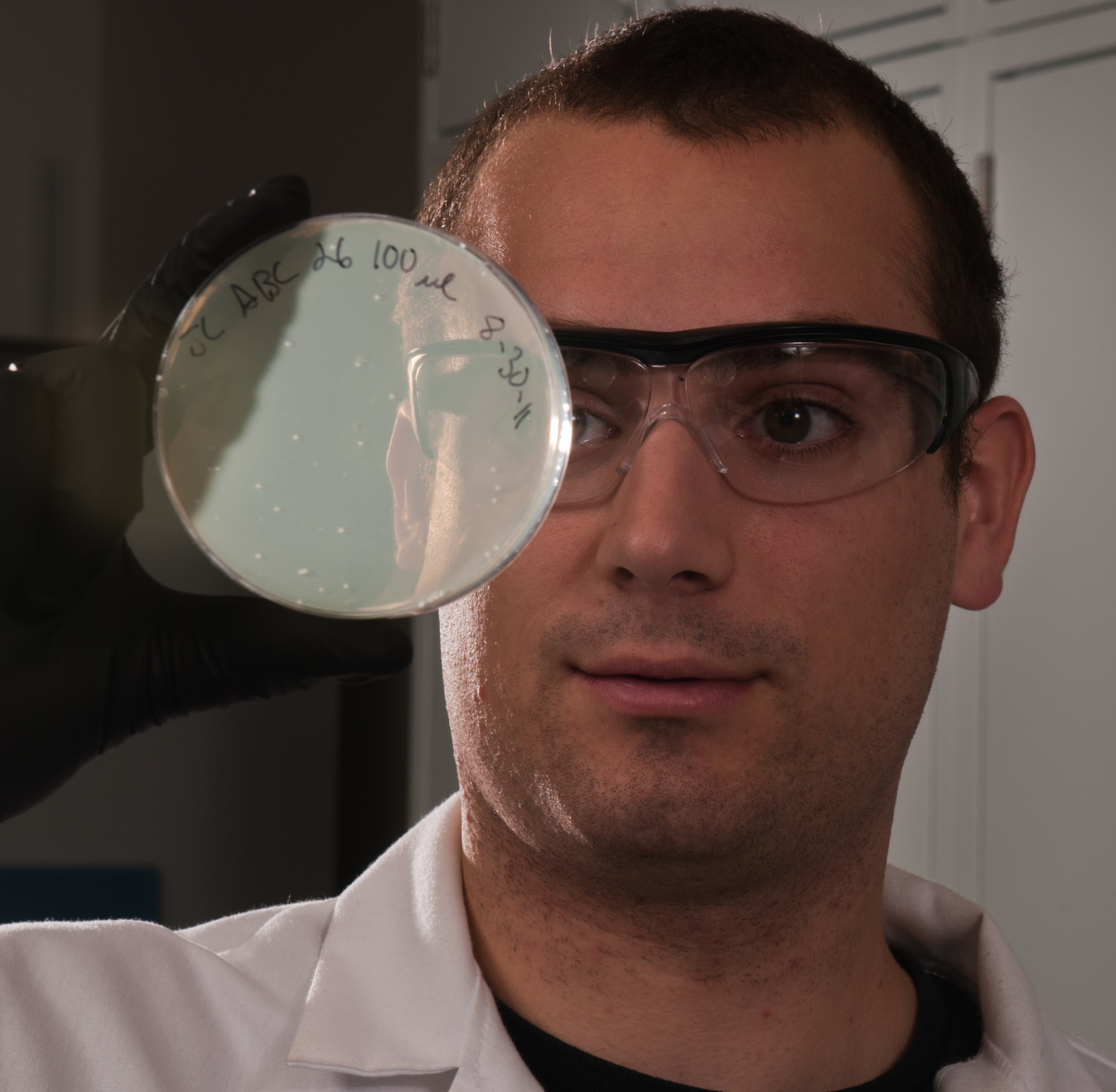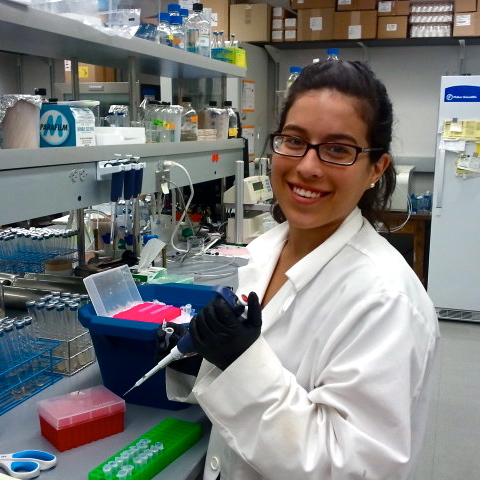Redox Biochemistry and Microbial Metabolism


Half of all species on Earth are microbial, and many of these organisms inhabit anaerobic environments such as in soil, freshwater and ocean sediment, and the digestive tracts of eukaryotes. Studying anaerobic prokaryotes represents a technical challenge. However, the payoff is great: their genomes contain a high proportion of unknown genes that belie exotic biochemistry, and they produce unusual secondary metabolites that could be used for human benefit.
The Buan Lab is interested in the physiology of strict anaerobes in order to understand how these organisms grow, what role they play in the environment and in the human microbiome, and in the unique or unusual metabolites and enzymes they produce.
Methanogenesis: The Biological Production of Methane Gas
We use methane-producing archaea (methanogens) as a model system to understand biological methane production. Methanogens are strict anaerobic archaea that obtain all their energy for growth and reproduction by reducing fermentation end products like acetate, H2+CO2, formate, methanol, methylamines, and methylsulfides to methane gas. Methanogens are the dominant archaea in anaerobic sediment where sulfide concentrations are low, and are also dominant archaea in the rumen of cattle, in the termite hindgut, and in the human digestive tract.
Methanogens produce 2 gigatons of methane gas annually, representing 4% of the global carbon cycle. Methane produced by methanogens can be harvested and used as a heat and energy source. Large dairy farms and wastewater treatment plants commonly harvest methane produced in anaerobic digesters and offset nearly all of their heat and energy needs using renewable methane. Currently, European countries (Switzerland, Germany) use renewable methane extensively, and are projected to steadily increase their use of biologically-produed methane in order to phase out consumption of fossil methane derived from geological sources.
The Buan Lab uses our expertise in microbial physiology and redox biochemistry to understand methanogen metabolism in order to discover new biochemistry and to engineer methanogens to increase the rate and yield of methane production from renewable feedstocks. We also use synthetic biology tools to coax methanogens to make other renewable chemicals such as isoprene.
This research is supported by the National Institutes of Health via the Nebraska Redox Biology Center, and the National Science Foundation. Translational projects have been supported by the Nebraska Center for Energy Sciences Research and the Water Environment & Reuse Foundation.
Interspecies Metabolism and Syntrophy
The human digestive tract is a strict anaerobic environment where bacteria, archaea, and fungi cooperate to help us digest our food. Microbes have evolved with us (our microbiome), and changes in microbiome populations are associated with diseases such as obesity, diabetes, colitis and Crohn's disease. To understand how microbes cooperate with each other and with us, we need to identify and interpret the chemical messages they send and receive. Because all cells need food and energy, metabolites like acetate, formate, propionate, butyrate, and hydrogen have a profound effect on the gut microbiome community.
The Buan Lab uses our expertise in microbial physiology, redox biochemistry, and systems biology to investigate how human gut bacteria and archaea cooperate to digest sugar. We are asking questions like:
-Do primary fermentation products or specific secondary metabolites have a larger effect on the microbiome?
-Can we predict which microbes will grow if we change our diet?
-Can we decode microbial "messages" in the gut?
This work is supported by the National Institutes of Health via the Nebraska Center for Integrated Biomolecular Communication, by the National Science Foundation, and has benefitted from working with the Department of Energy Systems Biology Knowledgebase (KBase) scientists.
Collaborations
The challenges associated with growing methanogens forces us to develop interdisciplinary problem-solving skills, and the unique biochemistry of methanogens inspires us to always "think outside the box". The Buan Lab collaborates with other researchers on transdisciplinary projects to push the envelope in research and industry. Examples of some of our research questions are:
-Can methanogens teach us how to grow crops more efficiently?
-How can traits from archaea be used to improve existing bioethanol and biofuel production technology?
-What is the minimal information we need to be able to accurately predict a microbial phenotype?
This work is supported by the University of Nebraska, the Nebraska Corn Board, the Nebraska Soybean Board, the Nebraska Center for Energy Sciences Research, the National Science Foundation, the United States Department of Agriculture, and the Department of Energy and DOE Systems Biology Knowledgebase (KBase).

